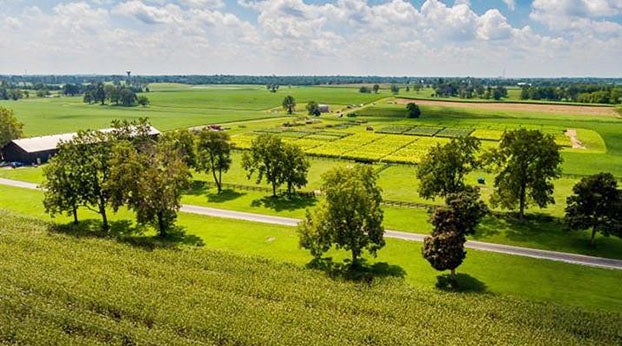FARM FACTS: Feed cows now for a live and healthy calf
Published 2:58 pm Thursday, January 12, 2017
By Will Stallard , U.K. Extension Agent for Agriculture
Calving season is about here for most beef cattle herds. To make money in the beef cattle business you need to start off with a live and healthy calf. Beef producers need to do everything they can to make those calves hit the ground ready to grow. This process must begin with how we take care of the cows.
Most years some Lincoln County farmers mention to me that they have noticed several of their calves being weaker at birth. Often we feed our cows low protein feed, mainly fescue hay, which means the cow is starved for energy and protein, which affects the calf thus we see what we call the weak calf syndrome. If they survive, these calves get off to a poor start and that will cost us pounds to sell in the fall. Either way a dead calf or poor growing calf is a loss to you.
The last 60 days of pregnancy are crucial to preventing that weak calf syndrome. Farmers must be certain their cows are getting enough protein and energy feed during the final two months of pregnancy. Researchers studying the weak calf syndrome have found that herds receiving enough protein and energy during the last 60 days of pregnancy have no problems with the weak calf syndrome. As the name suggest, calves displaying the syndrome are weak at birth, often too weak to stand and nurse, and this can result in their death. Farmers need to be aware that feeding low quality forages will lead to these problems. Farmers should know the protein and energy content of their feed, how many pounds of hay their pregnant cows are eating and be prepared to provide a supplement if it is needed. Forage sampling is the best way to find out the protein and energy content of your feed. That’s why we really encourage you to test your hay in the fall each year.
The question on your mind now is, what should I do to get a live and healthy calves? If you are feeding your cows grass hay, especially outside stored round bales of fescue, then you should be feeding pregnant cows a protein and energy supplement. In most cases you will need 3-5 pounds of corn and ½ pound of soybean meal per head per day or 3-5 pounds of a 12-14% grain mix; or 3-5 pounds of a corn gluten and soyhull mix; or 3-5 pounds of a 1/3 corn, 1/3 corn gluten, and 1/3 soyhull mix. There are a lot of possible other mixes using the commodity feeds that will work. Check with your nutritionist or check with me for ideas on grain mixes. If carrying buckets of feed is too much for you, then you can have more convenience and still take good care of the cattle by using the protein and energy tubs and lick wheel feeders. You pay extra for the convenience but they work well for many folks. Just make sure the sources provide good energy in addition to the proteins. Energy is often more limiting in our forage than the proteins. If you are feeding good clover/grass hay you probably don’t need any extra protein just 2 lbs. of corn.
If you are feeding alfalfa/orchardgrass hay, then you don’t need to feed any grain, as it will have plenty of protein and energy to meet their needs. That’s why I preach for beef producers to grow more alfalfa-grass hay, with it you don’t have to feed anything else. It is the cheapest source of energy and protein you can feed your beef cows.
The best way to find out if your forage is adequate is to visit with me about your feeding program for your beef cows. I’ll give you the advice you need to keep those calves coming healthy, strong and ready to grow. For more about beef cattle management or other agricultural topics, contact me at the Lincoln County Extension Office, 365-2447.




